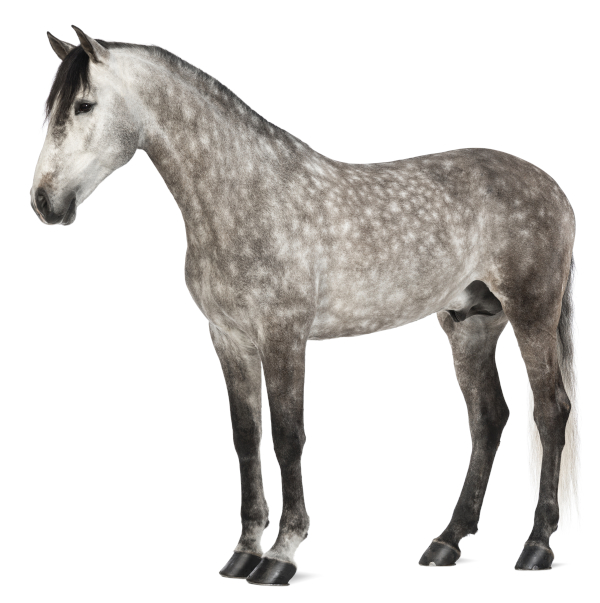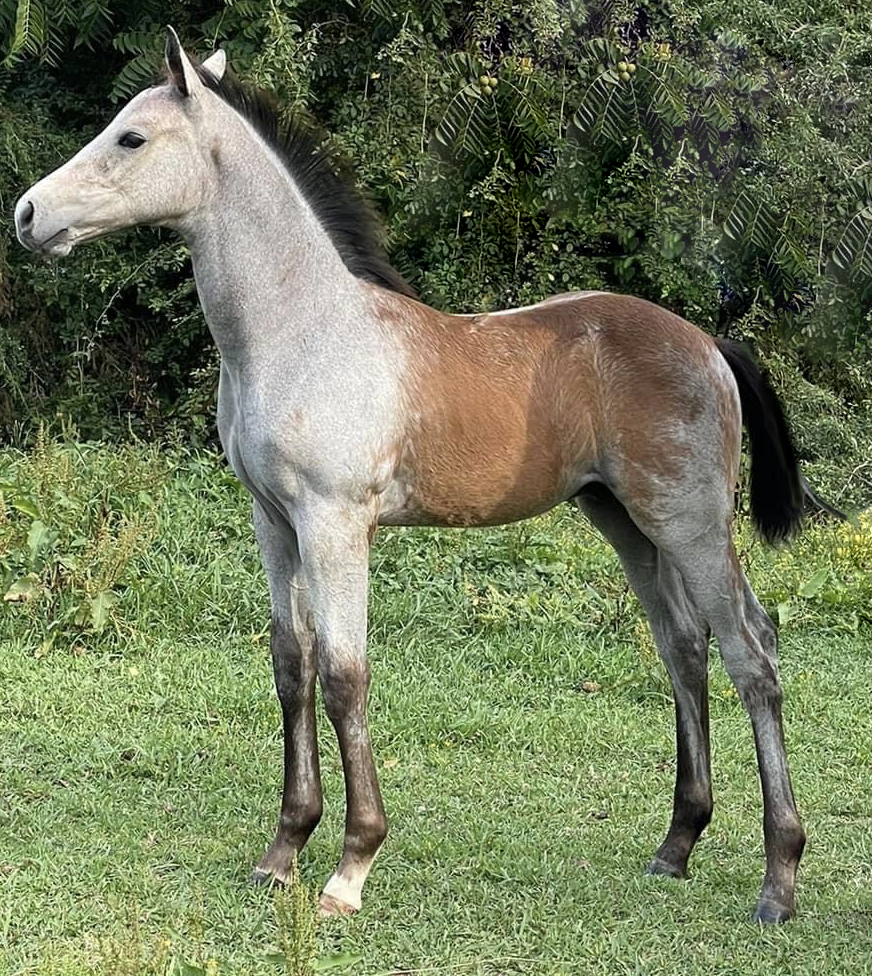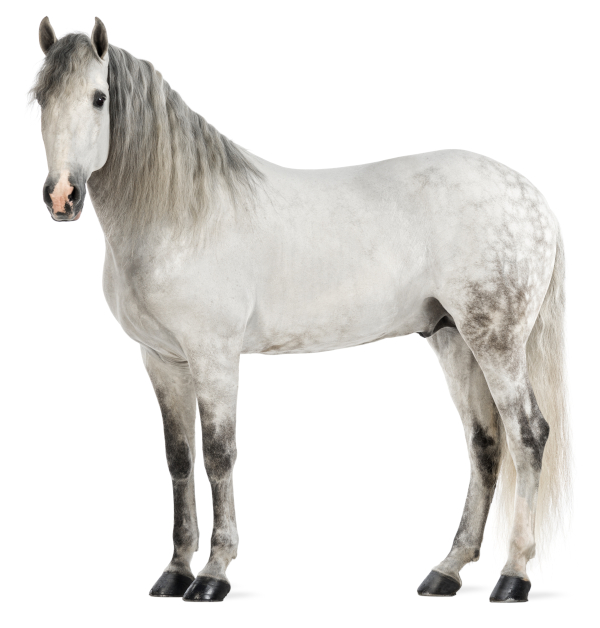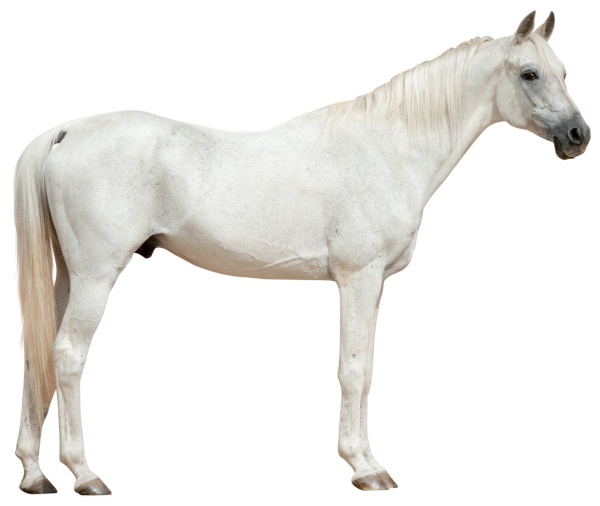Quick Summary

Click here for Price and Turnaround Time
Phenotype: The gray gene causes a progressive depigmentation of the hair, often resulting in a color that is almost completely white by 6-8 years of age, and can act on any base coat color.
Mode of Inheritance: Autosomal dominant
Alleles: N = Normal or non-gray, G = Gray
Breeds appropriate for testing: Many breeds
Explanation of Results:

- Horses with N/N genotype will not be gray and cannot transmit this gray variant to their offspring.
- Horses with N/G genotype will be gray and will show a progressive graying of the coat. They may transmit this gray variant to 50% of their offspring. Matings with N/N genotype will result in a 50% chance of producing a gray foal.
- Horses with G/G genotype will be gray and will show a progressive graying of the coat. They will transmit this gray variant to all of their offspring.
If gray is tested as part of a coat color panel, results are reported as:
- present which means the gray allele was detected and horse will gray or
- absent in which the gray allele was not detected and therefore the horse will not turn gray.
Horse Coat Color Panel
$85 per animal
White Pattern Panel 2
$85 per animal
Full Color/Pattern Panel
$155 per animal
Shetland Pony Coat Color Panel
$100 per animal
Sample Collection
Horse DNA tests are carried out using cells from the roots of a hair sample (roughly 20-30 hairs).
1. Grab about 10 hairs at the base.
2. Wrap the hairs around your finger and give it a quick pull.
3. Check the ends to make sure the pulled hairs have roots.
4. Repeat the process until you have collected about 20-30 hairs with intact roots.
5. You can choose different places on the mane or tail. NOTE: For foals, we recommend pulling all hairs from the tail only.
6. Tape the hairs to the submission form and fold the form along the dotted line to protect the sample. Do not use ziploc bags as they can cause condensation that allows mold to grow on the hair.
7. Place the folded form containing the sample in a paper envelope and mail it to the laboratory.

The gray gene causes progressive depigmentation of the hair, often resulting in a coat color that is almost completely white by the age of 6-8 years. Horses that inherit progressive gray can be born any color, then begin gradually to show white hairs mixed with the colored throughout the body. Usually the first signs of gray hair can be found on the head, particularly around the eyes.
Gray is dominant, therefore a single copy of the gray allele will cause a horse to turn gray. If a horse has two copies of gray, all offspring of this horse will be gray. Research indicates that horses with one copy of gray often retain some of the original pigment while horses with two copies of gray tend to progress to almost completely white.
Gray is found in many breeds and is the predominant color of the Lipizzan breed. Researchers at Uppsala University in Sweden discovered that a 4.6 kilobases duplication in intron 6 of gene syntaxin 17 (STX17) produces progressive graying in horses. Their research hypothesized that the mutation in STX17 affects the production of melanocytes and thus predisposes gray horses to melanoma as well as causes the graying of the coat.

Gray horses have a high incidence of dermal melanomas that are commonly seen around the tail and head. Over 70% of gray horses older than 15 years will develop melanoma. Gray homozygotes are more likely to develop melanoma than heterozygotes. Gray horses that are also homozygous for black (a/a genotype at the Agouti locus) have a higher risk for melanoma. Many gray horses show depigmentation of the skin around the eyes, mouth, and anus, but there are no known additional health risks associated with this condition.
Testing for this gray variant can help owners identify homozygous horses (animals with two copies of the variant) which will always produce gray offspring, and can assist in determining a foal's coat color, as gray is a progressive pigmentation pattern.



